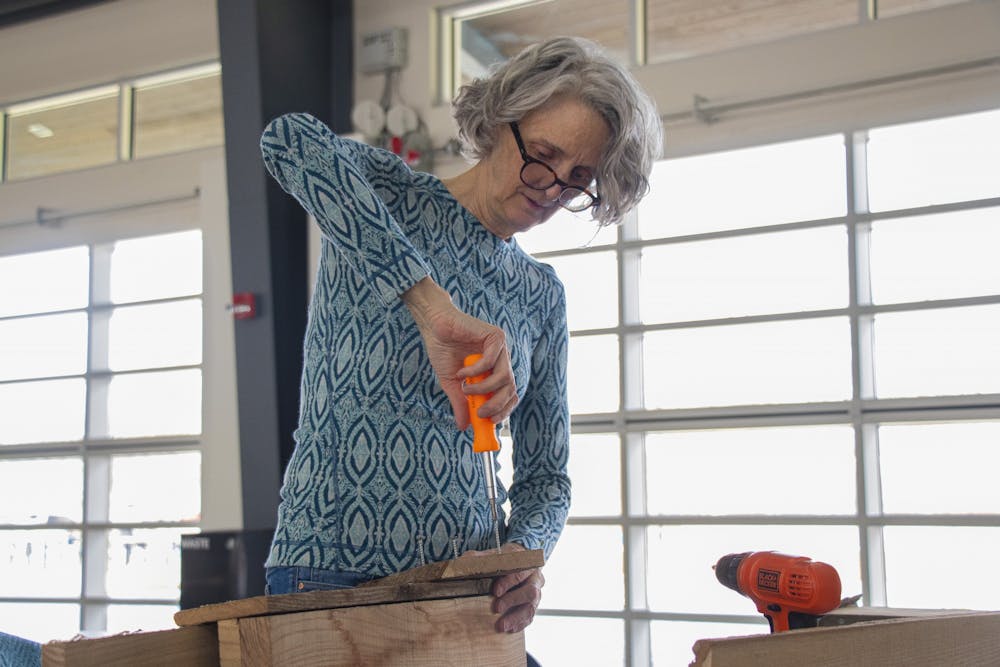Grunts of frustration and excited cheers of success echoed through the air as attendees got to work on their wooden creations. Connecting the parts and pieces together, eventgoers admired the bat boxes they constructed.
The Build a Bat Box event Sunday, organized by the Bloomington Parks and Recreation Department, drew about 35 people to Switchyard Park. The event was meant to educate people and spur conservation efforts for the Indiana bat population, said Rebecca Jania, Bloomington Parks and Recreation natural resources coordinator. Attendees learned about dangers facing the 13 different bat species located in Indiana and had a hand in combating those problems.
Jania said the main theme of the event was education. She said many people are familiar with vampire bats, the mammals that drink blood from livestock, but not many know about other species.
“We wanted to not only encourage bat conservation and the topic as a whole, but also educate people on these amazing, fine mammals,” she said.
Pesticides and herbicides are also factors, that are are detrimental to bats’ health, Jania said. When trying to get rid of garden insects and pests with chemical deterrents, people may unwittingly expose bats to high levels of toxins by poisoning their food source, which affects the food chain.
Drake said some of the problems facing the bat populations throughout Indiana are deforestation, wind turbine farms and White-nose Syndrome, which is characterized by a white fungus around the bats’ muzzles and wings.
Jania said there are many benefits to having a bat box on a property. The creatures get a home and a food source: common pests such as mosquitoes and moths.
She said one cool feature of the bat boxes is they’re created from repurposed wood from trees that were cut down by the city this year.
Sandy Drake, Bloomington Parks and Recreation Department natural resources education specialist, said she first fell in love with bats when she was young. Drake said there’s a strange, childhood fear associated with the winged creatures, but she said it’s hard to stay frightened once someone sees them fly.
“I love them a lot,” Drake said. “They’re the night birds.”
The event spurred from Drake’s own love of bats and desire to promote their inclusion into people’s lives.
“I’ve always wanted a bat box on my property, so I thought, ‘Hey, why not build some?’” Drake said.
Box placement is an important consideration for helping the bat population, Drake said. Making sure the box isn’t too low to the ground to avoid predators is an important factor. They must position it at least 10 feet above the ground.
Bats are odd compared to other mammals, Drake said during her presentation during the event. Drake said some bat species, such as the Hoary bat, give birth upside down. One species, the Eastern Pipistrelle, gives birth primarily to twins, taking up more than half of the mother’s weight.
“Connecting people with nature is definitely a day-to-day goal of mine,” Jania said.



